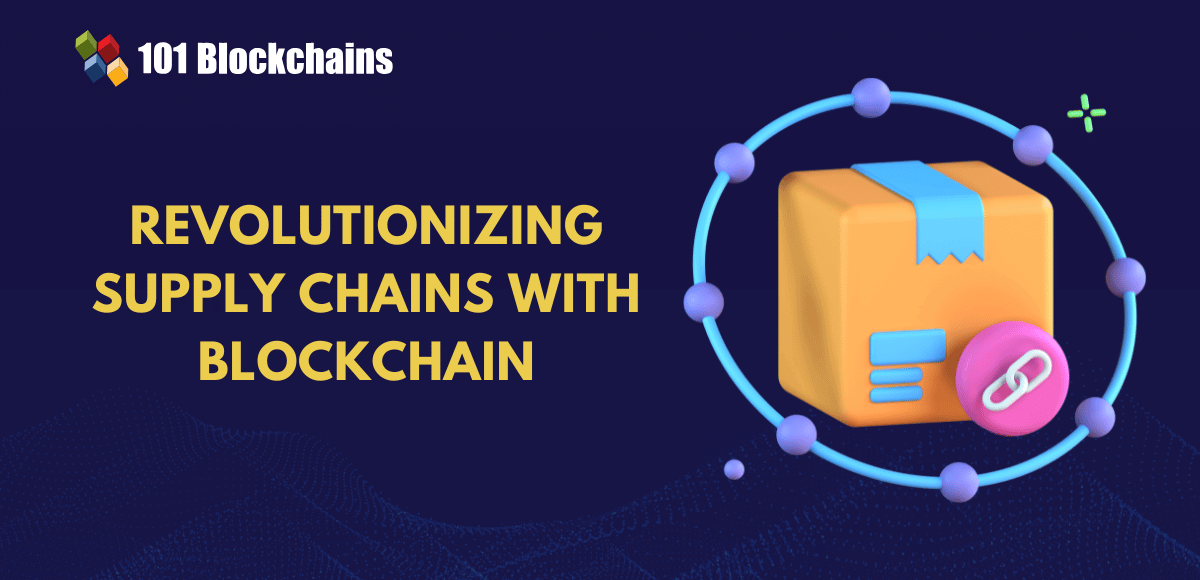Learn how blockchain truly works, master key definitions, and uncover what makes smart contracts so "smart." Dive into the fundamentals, gain valuable insights, and start your blockchain journey today!

- Blockchain
101 Blockchains
- on September 16, 2021
Blockchain Size: Everything You Need To Know
Blockchain is known to revolutionize the world around us. After all, it changes how we define the process, store data, and explore the security of a network that the application runs on. It brings immutability, transparency, and unparalleled security that no other technology has been able to do so until now.
But there is one big problem — blockchain block size. To understand the problem, let’s first learn how the blockchain works.
In any blockchain network, there is no centralized authority. Peers participate in bringing decentralization to the network. Each peer has a copy of the ledger (where all transactions are stored). This means that if any new transaction takes place, the ledger on each node will be updated accordingly. The unique solution lets businesses create decentralized networks capable of solving problems not possible before.
Build your identity as a certified blockchain expert with 101 Blockchains’ Blockchain Certifications designed to provide enhanced career prospects.
Blockchain Ledger Size: A Big Problem
However, blockchain is not free from problems. Initially, the blockchain block size was not as big, as only a small number of peers are connected to the network. For example, the bitcoin blockchain size was 614 MB in size in 2012. But now, the bitcoin blockchain size GB has grown tremendously to 250K MB. That’s approximately 250 GB of data that each peer/node carries with them. This leads us to a bitcoin blockchain size problem.
Other blockchain networks also suffer from the same problem. The blockchain size of Ethereum has already crossed 1 TB.
Please include attribution to 101blockchains.com with this graphic. <a href='https://101blockchains.com/blockchain-infographics/'> <img src='https://101blockchains.com/wp-content/uploads/2019/07/Blockchain-definition.jpg' alt='Blockchain size definition='0' /> </a>
Is There Any Blockchain Size Limit?
In the last two years, the bitcoin blockchain ledger size has grown from 150 GB to 250 GB. That’s almost 50 GB per year. By 2030, we can see the blockchain ledger size cross more than 1 TB easily. However, not every node needs to download the whole blockchain to become functional. Some participants take part in the blockchain network to make transactions and not to validate one.
Some nodes are called full nodes. The full nodes are required for those who are willing to participate in the validation of the ongoing transaction. This means that they have to download the whole 250 GB of blockchain data containing the block headers and transactions.
More so, the current bitcoin blockchain size limit is 1 MB. However, some of the space within this limit is not usable. So, you will have to work with the bitcoin blockchain size limit just as it is.
The problem of the blockchain ledger size of Ethereum was more intense than that of bitcoin. Alistair Milne, a bitcoin investor, raised alarms on how the Ethereum ledger size is growing compared to bitcoin. According to the picture posted by him, Ethereum is growing at 3x that of bitcoins.
But, that might not be completely true as Ethereum also offers ways to work with the ledger. It offers a concept called pruning, which allows nodes to work without the need to download whole blockchain data.
Want to become a bitcoin expert? Enroll Now in Getting Started with Bitcoin Technology Course
Does Blockchain Size Matter?
Yes, blockchain ledger size matters. Blockchain is relatively a new technology, and it will only grow in the upcoming years. Bitcoin being a first-generation blockchain solution, is not free from problems. It has both scalability and size problems.
With the ever-increasing size of the blockchain, scalability also becomes a problem. It has been one of the significant issues for bitcoin. To temporarily solve the problem, they did a SegWit2x hard fork, which worked towards improving the block size (at the granular level) — improving the scalability and performance issues associated with bitcoin.
The ledger size is going to increase rapidly, with estimates of it each 6.5 TB by Jan 2023. It will bring in the need to buy harder disk space to participate in the network.
However, according to Moore’s law, hard disk storage prices will decrease with time, and you will be able to buy cheaper storage. The main problem arises when the blockchain size growth overcomes the rate at which the storage becomes cheaper.
It will make it hard for the enthusiast to bring in their skills or contributions to the network. Contributors need to spend $1000’s dollars to get their nodes running, which may not be worth it.
Want to learn blockchain technology in detail? Enroll Now in Certified Enterprise Blockchain Professional (CEBP) Course
How Can Large Blockchain Size Become an Issues?
We live in a world that thrives on transactions. Every day, there are non-cash payments in billions. The growth of transactions is in a quadratic fashion. However, with cryptocurrencies like bitcoin, Ethereum, NEO, etc., we see a change in how transactions are carried out through non-traditional channels.
Right now, bitcoin doesn’t have to account for many transactions compared to Visa or other forms of transactions. But, if we take a hypothesis where bitcoin is used for every transaction out there, it can take up to 2.4 terabytes for each block.
Also, not to mention, blockchain is capable of generating one block every 10 minutes. In short, every 10 minutes, 2.4 terabytes of data will be added to the blockchain size. In one day, 350 GB is added in one day and 127 TB every year. This also means that there is no ledger limit.
The issue limit brings new problems. These numbers are real concerns. Also, the fact that the block size will increase exponentially, it will take more time for miners to solve a block resulting in slower transactions.
On the contrary, our only hope is cheap hardware in the near future. Terabytes of storage won’t be an issue, and also processing power can grow exponentially, making transaction validation much easier.
How Does It Affect Blockchain-Based Projects?
So, does the problem impact startups that are building their application on top of Ethereum and bitcoin? Well, it depends on how the two blockchain technologies evolve with time. Right now, startups shouldn’t worry about size.
Ethereum blockchain already offers pruning, which results in less blockchain data than what is needed by a full node. Bitcoin, however, doesn’t support pruning yet. If someone prunes the bitcoin, they will lose the full node status.
Start learning Blockchain with the world’s first Blockchain Expert Career Path and become a Blockchain Expert!
Conclusion
Blockchain size is not the top problem that needs to be resolved. In fact, it is the scalability and transaction speed that are the main focus now.
So, what do you think about blockchain ledger size, including bitcoin and Ethereum? Also, there are many more blockchain projects around that focus on saving space and making it as much as efficient as possible. If you are just a starter and want to more about blockchain technology, we recommend enrolling in our blockchain courses as it focuses on the core concepts of blockchain more thoroughly.
*Disclaimer: The article should not be taken as, and is not intended to provide any investment advice. Claims made in this article do not constitute investment advice and should not be taken as such. 101 Blockchains shall not be responsible for any loss sustained by any person who relies on this article. Do your own research!






